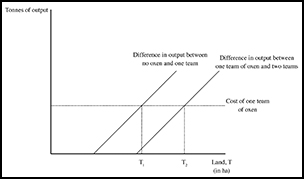Crossref Citations
This article has been cited by the following publications. This list is generated based on data provided by
Crossref.
Bowles, Samuel
and
Carlin, Wendy
2020.
Inequality as experienced difference: A reformulation of the Gini coefficient.
Economics Letters,
Vol. 186,
Issue. ,
p.
108789.
Kay, Kevin
2020.
Dynamic Houses and Communities at Çatalhöyük: A Building Biography Approach to Prehistoric Social Structure.
Cambridge Archaeological Journal,
Vol. 30,
Issue. 3,
p.
451.
Wilson, Kurt M.
and
Codding, Brian F.
2020.
The Marginal Utility of Inequality.
Human Nature,
Vol. 31,
Issue. 4,
p.
361.
Ames, Kenneth M.
and
Grier, Colin
2020.
Inequality on the Pacific Northwest Coast of North America measured by house-floor area and storage capacity.
Antiquity,
Vol. 94,
Issue. 376,
p.
1042.
Tereso, João Pedro
Prats, Georgina
and
Alonso, Natàlia
2020.
Storage in Prehistory: Introduction to the special issue.
Journal of Archaeological Science: Reports,
Vol. 32,
Issue. ,
p.
102398.
Prats, Georgina
Antolín, Ferran
Alonso, Natàlia
and
Biehl, Peter F.
2020.
Household storage, surplus and supra-household storage in prehistoric and protohistoric societies of the Western Mediterranean.
PLOS ONE,
Vol. 15,
Issue. 9,
p.
e0238237.
Rosenzweig, Melissa S.
2020.
Confronting the Present: Archaeology in 2019.
American Anthropologist,
Vol. 122,
Issue. 2,
p.
284.
Fuller, Dorian Q.
2020.
Transitions in Productivity: Rice Intensification from Domestication to Urbanisation.
Archaeology International,
Vol. 23,
Issue. 1,
Diffey, Charlotte
Neef, Reinder
Seeher, Jürgen
and
Bogaard, Amy
2020.
The agroecology of an early state: new results from Hattusha.
Antiquity,
Vol. 94,
Issue. 377,
p.
1204.
Price, Max
Fisher, Michael
and
Stein, Gil
2021.
Animal Production and Secondary Products in the Fifth Millennium BC in northern Mesopotamia.
Paléorient,
p.
9.
Fochesato, Mattia
Higham, Charles
Bogaard, Amy
and
Castillo, Cristina Cobo
2021.
Changing social inequality from first farmers to early states in Southeast Asia.
Proceedings of the National Academy of Sciences,
Vol. 118,
Issue. 47,
Smith, Eric Alden
and
Codding, Brian F.
2021.
Ecological variation and institutionalized inequality in hunter-gatherer societies.
Proceedings of the National Academy of Sciences,
Vol. 118,
Issue. 13,
Green, Adam S.
2021.
Killing the Priest-King: Addressing Egalitarianism in the Indus Civilization.
Journal of Archaeological Research,
Vol. 29,
Issue. 2,
p.
153.
Stroud, Elizabeth
Bogaard, Amy
and
Charles, Michael
2021.
A stable isotope and functional weed ecology investigation into Chalcolithic cultivation practices in Central Anatolia: Çatalhöyük, Çamlıbel Tarlası and Kuruçay.
Journal of Archaeological Science: Reports,
Vol. 38,
Issue. ,
p.
103010.
Alfani, Guido
2021.
Economic Inequality in Preindustrial Times: Europe and Beyond.
Journal of Economic Literature,
Vol. 59,
Issue. 1,
p.
3.
Ellis, Erle C.
2021.
Land Use and Ecological Change: A 12,000-Year History.
Annual Review of Environment and Resources,
Vol. 46,
Issue. 1,
p.
1.
Bowles, Samuel
Choi, Jung-Kyoo
Hwang, Sung-Ha
and
Naidu, Suresh
2021.
The Handbook of Historical Economics.
p.
391.
Trentacoste, Angela
Nieto-Espinet, Ariadna
Guimarães, Silvia
Wilkens, Barbara
Petrucci, Gabriella
and
Valenzuela-Lamas, Silvia
2021.
New trajectories or accelerating change? Zooarchaeological evidence for Roman transformation of animal husbandry in Northern Italy.
Archaeological and Anthropological Sciences,
Vol. 13,
Issue. 1,
Thompson, Amy E.
Feinman, Gary M.
Lemly, Marina
and
Prufer, Keith M.
2021.
Inequality, networks, and the financing of Classic Maya political power.
Journal of Archaeological Science,
Vol. 133,
Issue. ,
p.
105441.
Xiong, Jianxue
Chen, Guoke
Yang, Yishi
Meng, Hailiang
Storozum, Michael
Allen, Edward
Wang, Hui
and
Wen, Shaoqing
2022.
Mixed economy and dried foods: Dental indicators reveal Heishuiguo Han Dynasty population's environmental adaptation to the semi‐arid region of northwestern China.
International Journal of Osteoarchaeology,
Vol. 32,
Issue. 6,
p.
1186.





